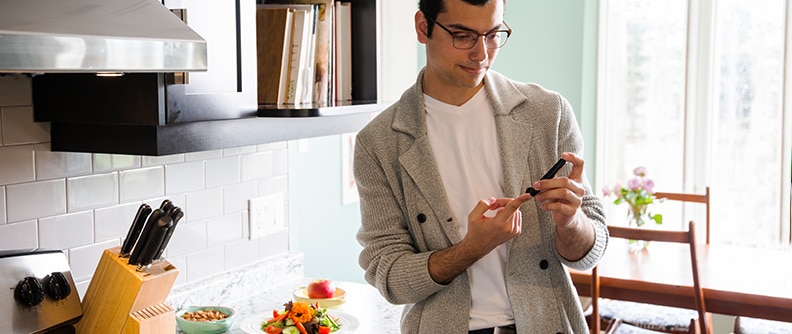Knowing when you should check your blood sugar, along with your target numbers for blood sugar, blood pressure, cholesterol, and weight, can help you take action where needed and find success.
Timing is everything
Talk to your doctor about when to check your blood sugar. If you already have a schedule, stick with it.
If you don't have a schedule yet, try starting out by checking 2 times a day in the following pattern:
Day 1: Before breakfast and 2 hours after starting breakfast
Day 2: Before lunch and 2 hours after starting lunch
Day 3: Before dinner and 2 hours after starting dinner
Repeat this pattern for 1 month. Then bring your meter or diary to your appointments so you and your doctor can have a better idea of how your meals, exercise, and medications affect your blood sugar.
You'll need to check more often if you:
- Are taking insulin
- Change medications
- Become more or less active
- Change what you eat
- Are sick
- Are under a lot of stress
Checking your blood sugar on your own
When you check your blood sugar on your own using a meter, you'll see what your blood sugar level is at the time you test. This can help you figure out how to improve your levels.
These are the standard blood sugar meter ranges to aim for:
Before meals: 80-120
2 hours after you start a meal: Less than 160
At bedtime: 100-140
Talk to your doctor about your own goal, which may differ from the ranges above.
Checking your blood sugar at the doctor's office
The A1C test is a lab test ordered by your doctor. It shows what your average blood sugar numbers have been over the past 2 to 3 months and whether you need to make any changes.
The goal for most people with diabetes is 7% or less. Your guidelines may be different. Talk to your doctor about your goal.

